The best Winter Soldier / Bucky Barnes comics of all time
On the 10-year anniversary of Bucky Barnes' MCU debut, we look back at the best Winter Soldier comics

Despite debuting alongside Captain America in the character's original '40s comics, Bucky Barnes spent much of the 20th century dead. His death was tied into how Steve Rogers came into in the Marvel Universe of the '60s and beyond, and his motivations as a modern hero.
As such, Bucky was stuck as a character that could really only appear in flashbacks to the wartime era. Like Uncle Ben, Gwen Stacy, and Jason Todd, he was one of the few characters in comics that stayed dead.
That all changed when Ed Brubaker came aboard Captain America in 2005, resurrecting Bucky as the mysterious Winter Soldier. Brubaker's dramatic reinvention of Bucky helped kickstart a progression for the character that has continued on through the work of numerous other creators over the past 15+ years in comics, and, of course, into film and television.
With that in mind, we are presenting the best Bucky Barnes / Winter Soldier stories to celebrate the character and all the trials and tribulations that made him who he is.
10. Tales of Suspense: Hawkeye & the Winter Soldier

The world saw Natasha Romanov die during Secret Empire, so who is bumping off her old enemies one by one now? This is the question that both Bucky Barnes and Clint Barton are working to find answers to in the 2017-18 limited series Tales of Suspense: Hawkeye & the Winter Soldier which Matthew Rosenberg uses as a chance to team the two up and lean into a classic buddy-cop dynamic.
Bucky's seriousness plays off of Clint's more aloof nature and vice versa. Both have been close with Nat at different points in their life and the friction that stems from this, coupled with the genuine care for the friend they've already started to grieve, buoys the narrative's twists and turns as the duo get closer to uncovering the truth.
Travel Foreman's art and Rachelle Rosenberg's colors are not as strong a pairing as you'd hope, though they still have their moments. At times of calm, the scratchy level of detail prevents the scenes from having full definition. In moments of action, however, they use this in an exacting fashion. An early fight of Clint's benefits from his speed being depicted as a blur and later action scenes utilize a similar energy to keep things moving through a variety of shifting terrain.
Weekly digests, tales from the communities you love, and more
Buy: Amazon
9. Winter Soldier: Second Chances
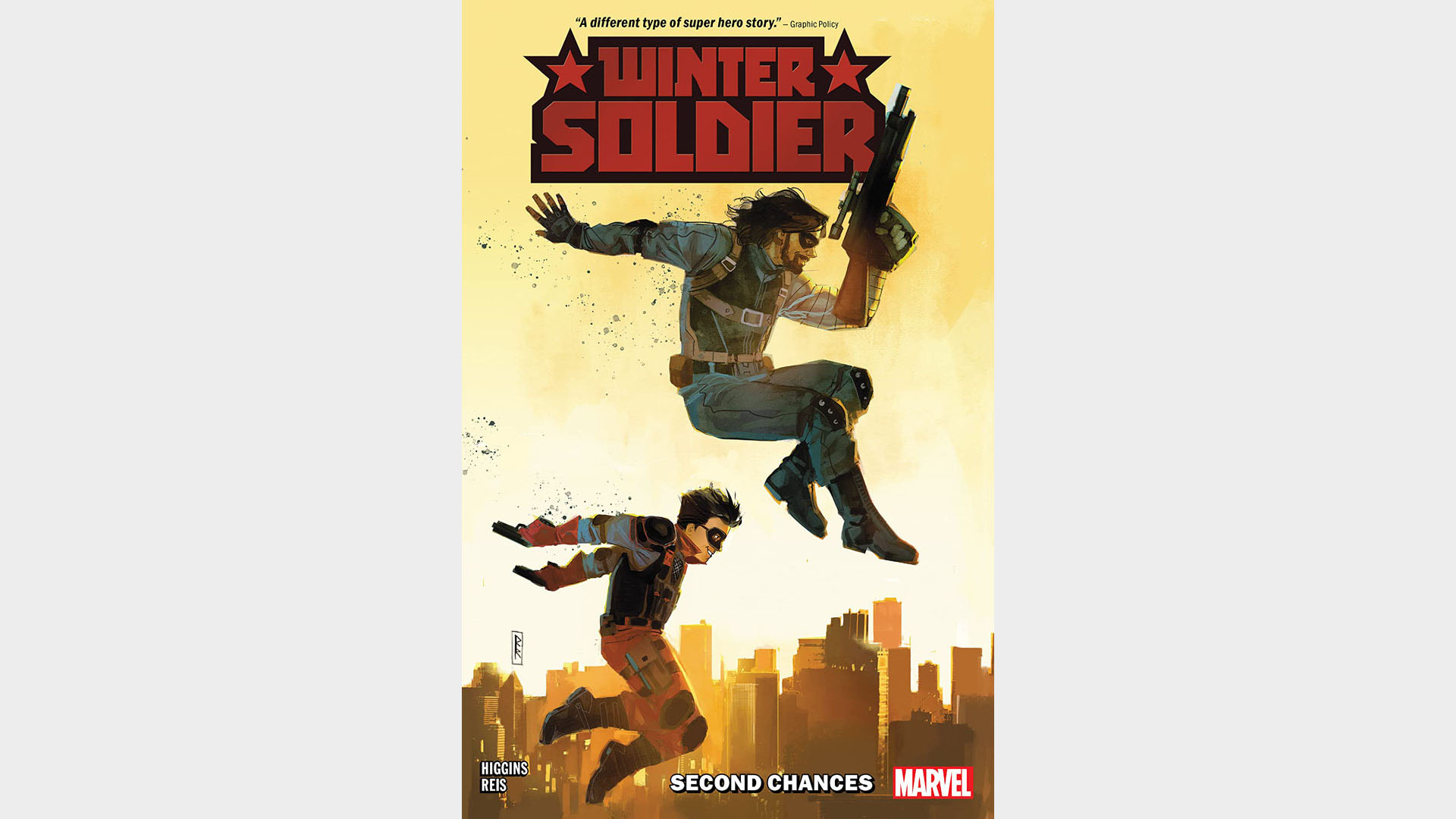
A major part of Bucky's character since he returned from the dead has centered around reclaiming his identity. That also means that he can also see when others are in danger of losing theirs to similar tactics of deception, and bless him, he can't help but feel implored to try and help.
Penned by Kyle Higgins, the 2019 Winter Soldier: Second Chances series sees him acting with the best of intentions as he comes across a kid called RJ who has been indoctrinated by Hydra. Only the boy is not so far gone as to be lost, and Bucky attempts to help him find his back to who he was.
However, Winter Soldier: Second Chances is also about the complications that arise from Bucky's involvement. Things get messy in ways that can't be undone. Despite the efforts of the characters involved to recover, these are consequences that will need further healing to process, the kind that Bucky may not be able to provide himself. There is a couple of narrative missteps towards the end, but at the same time, these come from Higgins' willingness to dive into unstable territory and see what he can build out of it. Again, the best of intentions.
It certainly helps Winter Soldier: Second Chances that Rod Reis' art is stunning from start to end too. Even with the fluidity of movement and structure that his pages are capable of, he never lets the primary goal of expressing the emotions of any given scene get away from him. Their painterly efforts are such a stand-out style –as in his recent New Mutants run for how well it captures the naturalism of the Krakoa setting – though this particular limited series' use of red is the most evocative element; especially in the back half where Reis' use of the color lingers like a bloodstain.
Buy: Amazon
8. Winter Solider: Winter Kills

Bucky was first created to be one of the original kid heroes; he was to Captain America just as Batman had Robin by his side. Around the same time that he returned to the Marvel Universe, the publisher also launched the Young Avengers, with this Winter Soldier: Winter Kills one-shot seeing the characters collide. Much of the story is situated in the midst of the unfolding superhero Civil War of 2006 and finds Bucky unintentionally taking point on a Young Avengers mission, reversing his original dynamic of being the sidekick.
Scripted by Ed Brubaker, with art by Lee Weeks, Stefano Guadiano, Rick Hoberg, and Matt Milla, Winter Soldier: Winter Kills begins with melancholy hanging in the Christmas air as Bucky is still in the process of coming to terms with his brainwashing and programming, the actions he carried out and the bodies left in his wake.
The action beats – including the almost obligatory fight between heroes upon their initial meeting – are flashy without distracting from the issue's primary purpose of rumination. A couple of flashbacks to wartime London play like quick jolts of memory. It's been a long time since Bucky felt the camaraderie that he did with Steve, Toro, and Namor, though fragments of that feeling permeate through as he sees the Young Avengers work as a team. As they come to mind, it's all part of his journey in the present of working out how to atone.
Buy: Amazon
7. Invaders
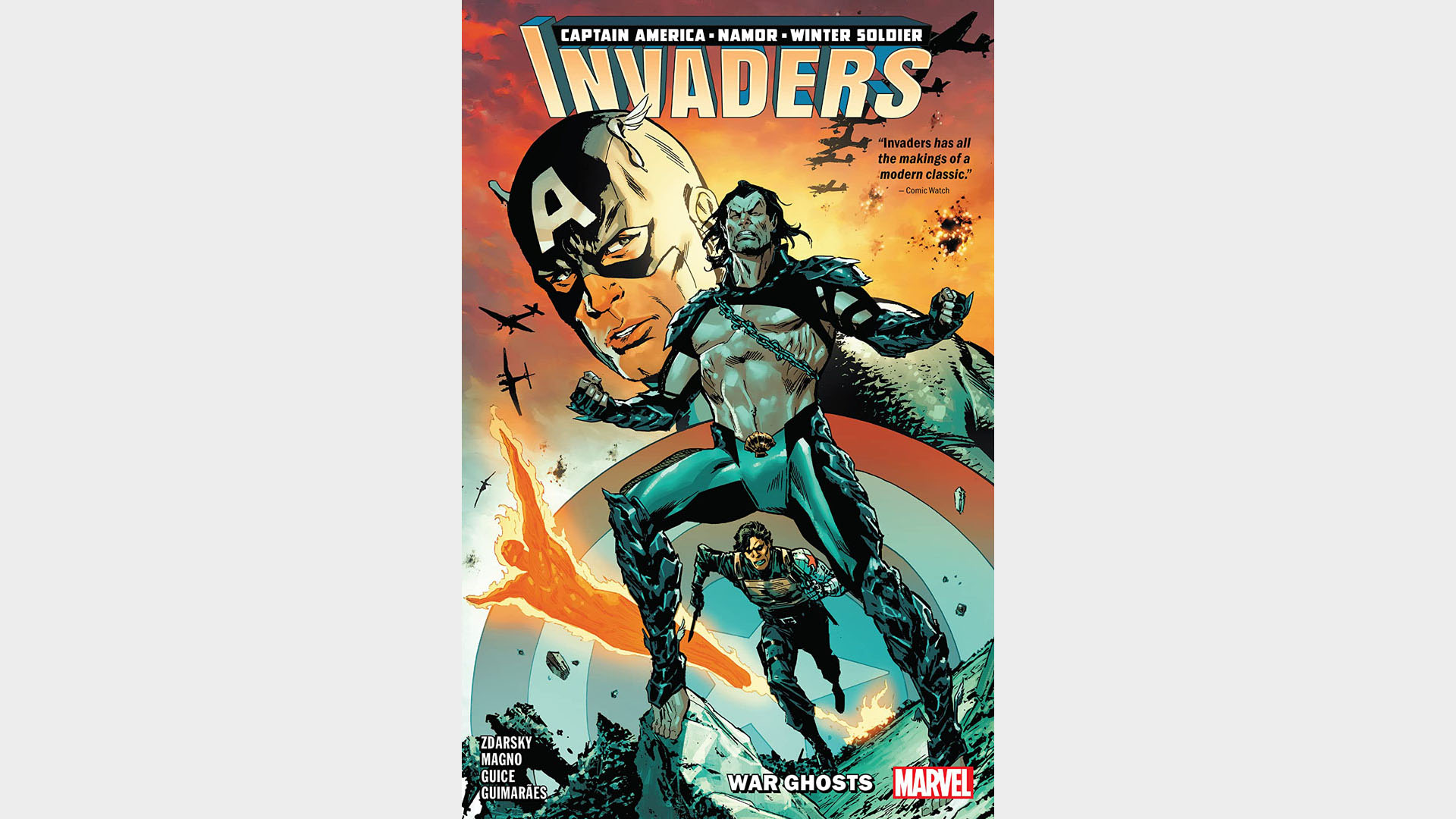
The 2019 - 2020 series Invaders (collected as War Ghosts, Dead in the Water, and Always an Invader) keeps one eye on the camaraderie of the Invaders ensemble and the other on modern times as those bonds are tested in an intense fashion by Chip Zdarsky's plotting.
In the present, Namor is not in a great place. He recently attacked and executed employees of Roxxon and the Avengers are starting to get concerned about the level of antagonism he's demonstrating towards the surface world. Steve, however, wants to try and deal with his wartime ally's problems on an Invader-to-Invader level, with Bucky sneaking about in the background in the hopes of finding out what they need to be prepared for should more get involved.
Between Butch Guice's '40s flashbacks and Carlos Magno's present-day scenes (with cohesion between the two ensured by the consistency of Alex Guimarães' colors), the series has a big sense of history and scale. Even when the series expands to have worldwide ramifications, the characters themselves remain the series' core.
Buy: Amazon
6. No Escape
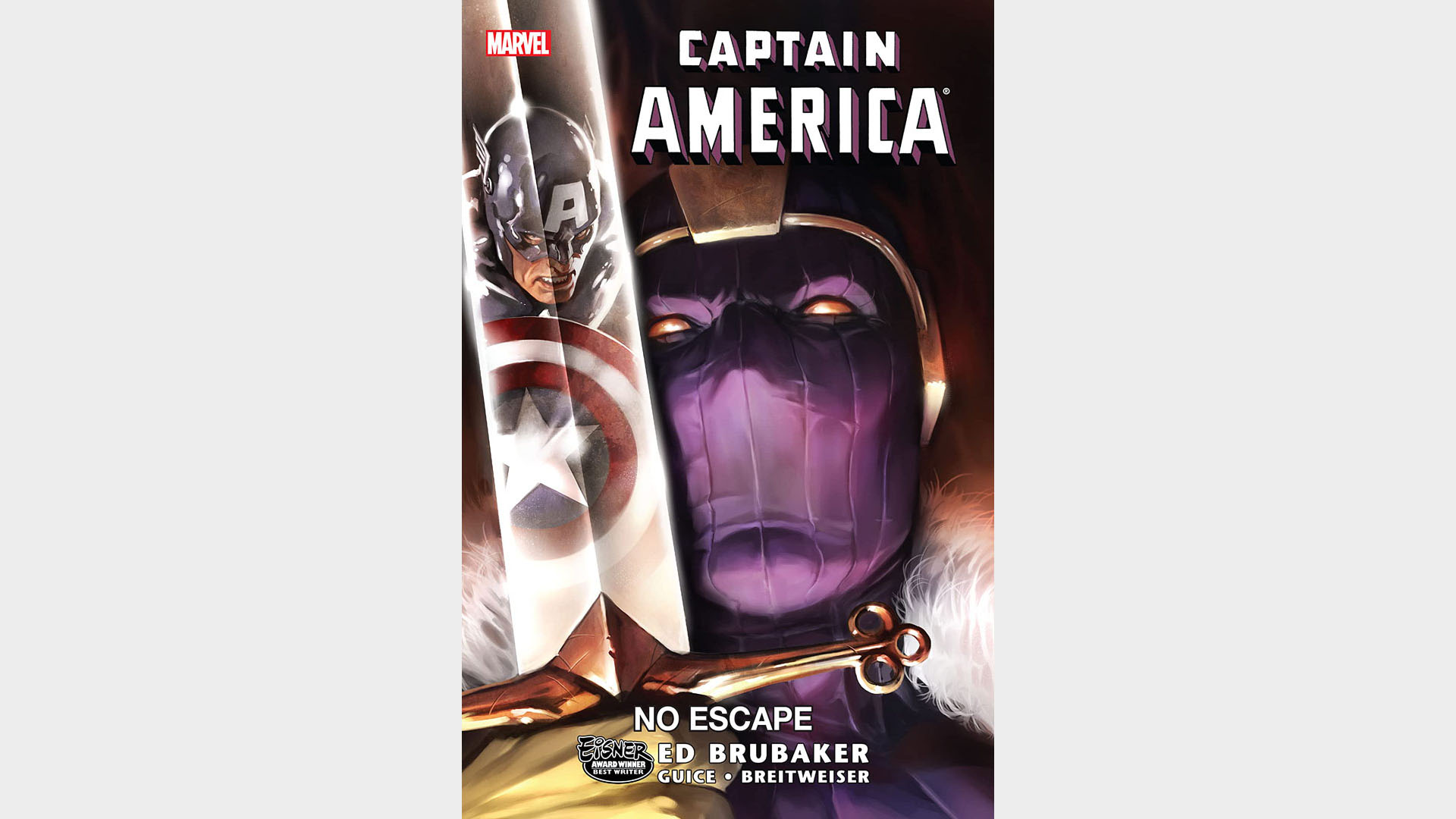
While Steve and Bucky shared plenty of issues in the early stages of Ed Brubaker's Captain America run, it took until the former's eventual return from beyond the grave before the two truly worked together. Only it comes at a point where Bucky has not yet been able to properly process everything that's happened to him since regaining his autonomy. Certainly not in comparison to how Steve has had the benefit of time since getting unthawed from the ice. This mental factor is not only one that the original Captain America notices in his partner with ease, but also one that Baron Zemo capitalized on in 2010.
The 2011 arc Captain America: No Escape puts the heroes on the back foot. The public learns more about Bucky's previously obscured history while Zemo's plan plays out concurrently. An explosion threatens to put Sam Wilson out of action and like other components of the plan, it is all to isolate Bucky from his closest allies, including Natasha Romanov. The arc gradually leads back to where the Winter Soldier was born and forces Bucky to confront the direction of his life on his own.
Butch Guice is the primary artist of the arc and is assisted by a multitude of inkers and colorists, one of the latter being Dean White. White brings a pulpier feel to his contributions thanks to his thicker-set colors. For a run that had largely stuck to a muted style, these moments really pop on the page. Though the vibe doesn't persist through the entire arc as he is not the sole colorist, it does make Zemo's early masked appearances all the more garish and intense as well as leading to the story's most striking moment – a surreal depiction of a dream of Bucky's. The colors and images bleed down the page, almost staining his subconscious in a way that can't easily be washed away.
Buy: Amazon
5. Bucky Barnes: The Winter Soldier
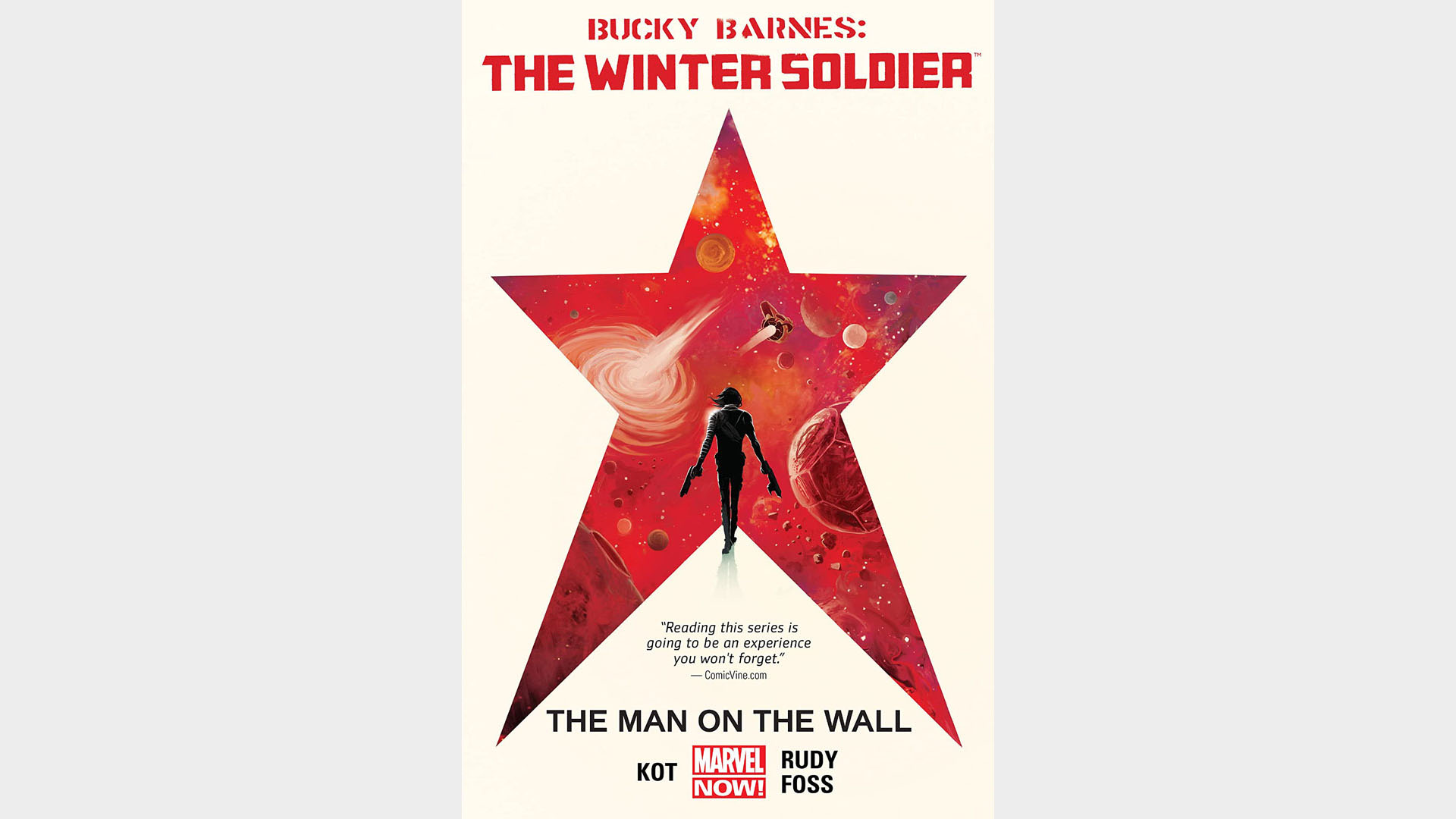
Original Sin was one of many '10s events at Marvel. While its primary effects were related to Jason Aaron's Thor run, its ramifications also saw Bucky's circumstances change. As a result of Nick Fury taking up the position of being the defacto Watcher, Bucky became the Man on the Wall, protecting Earth from intergalactic threats. This shift in the status quo didn't last long, admittedly, but lasted long enough for the 2014-15 series Bucky Barnes: The Winter Soldier, written by Ales Kot, primarily drawn by Marco Rudy and lettered by Clayton Cowles.
Over 11 issues, the unique team of Bucky and Daisy Johnson are led to the planet Mer-Z-Bow by a malevolent force. While there, Bucky not only gets involved with the planet's queen, but he also has to contend with the arrival of his older self from another universe. Kot uses this set-up as a prompt to dig into who Bucky would be without the constant need to fight and the overall power of love.
Writing it out like that is admittedly reductive, as the true strength of the series comes from seeing how Rudy pushes themselves to visualize the narrative in the most breathtaking fashion possible. Any given issue with their work – Langdon Foss, Michael Walsh, and Jordan Boyd assist when the series dips into another universe – has no shortage of page layouts that leave you awestruck as a result of their expansive design and execution without ever making the events being depicted impenetrable or leaving readers unsure of how to read them.
This is the most abstract entry on the list, an unabashed swing for the fences, and great proof of how versatile Bucky can be as a character for creative teams that push him into new space.
Buy: Amazon
4. The Bitter March
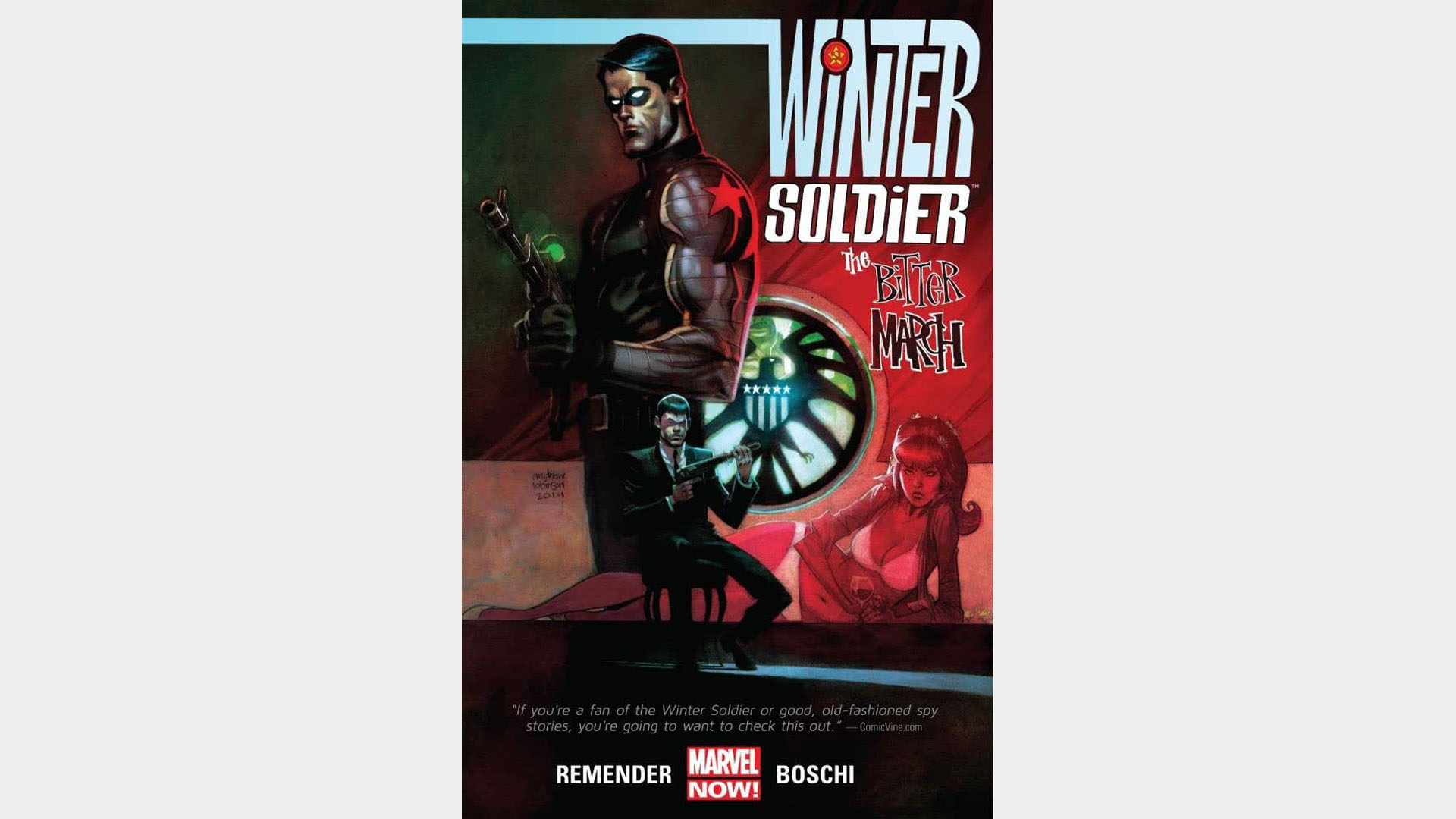
So many of the stories told with Bucky have been focused on contemporary times within the Marvel Universe with the occasional flashback to his time as a brainwashed assassin. In 2014, when the Captain America: The Winter Soldier film was about to release, the opportunity for a synergistic tie-in to the cinematic event led to a story about that under-explored Cold War era of his life.
Winter Soldier: The Bitter March ties into Rick Remender's run on Captain America, though still manages to function as an entertaining and standalone story. Set in the '60s, it casts Bucky as a looming antagonist. SHIELD agent Ran Shen is tasked with the mission of extracting two former Nazi scientists from Europe in the hopes of America being able to make use of their knowledge of the Alchemy Formula. Of course, it's not an easy task considering the fraught geopolitics of the era and that's before considering that the Winter Soldier is on their trail, a looming antagonist that's never too far behind.
It's a very pulpy throwback, not just in terms of the story, but also due to Roland Boschi and Chris Chuckry's artwork. Their cartooning is dynamic in nature with the thick linework fleshing out locations and characters alike. There is a clarity to it not to mention a weight to the work. When a fight breaks out, the energy being exerted from the limbs flying about is evident – none more so than Bucky's metallic arm.
Buy: Amazon
3. Winter Soldier
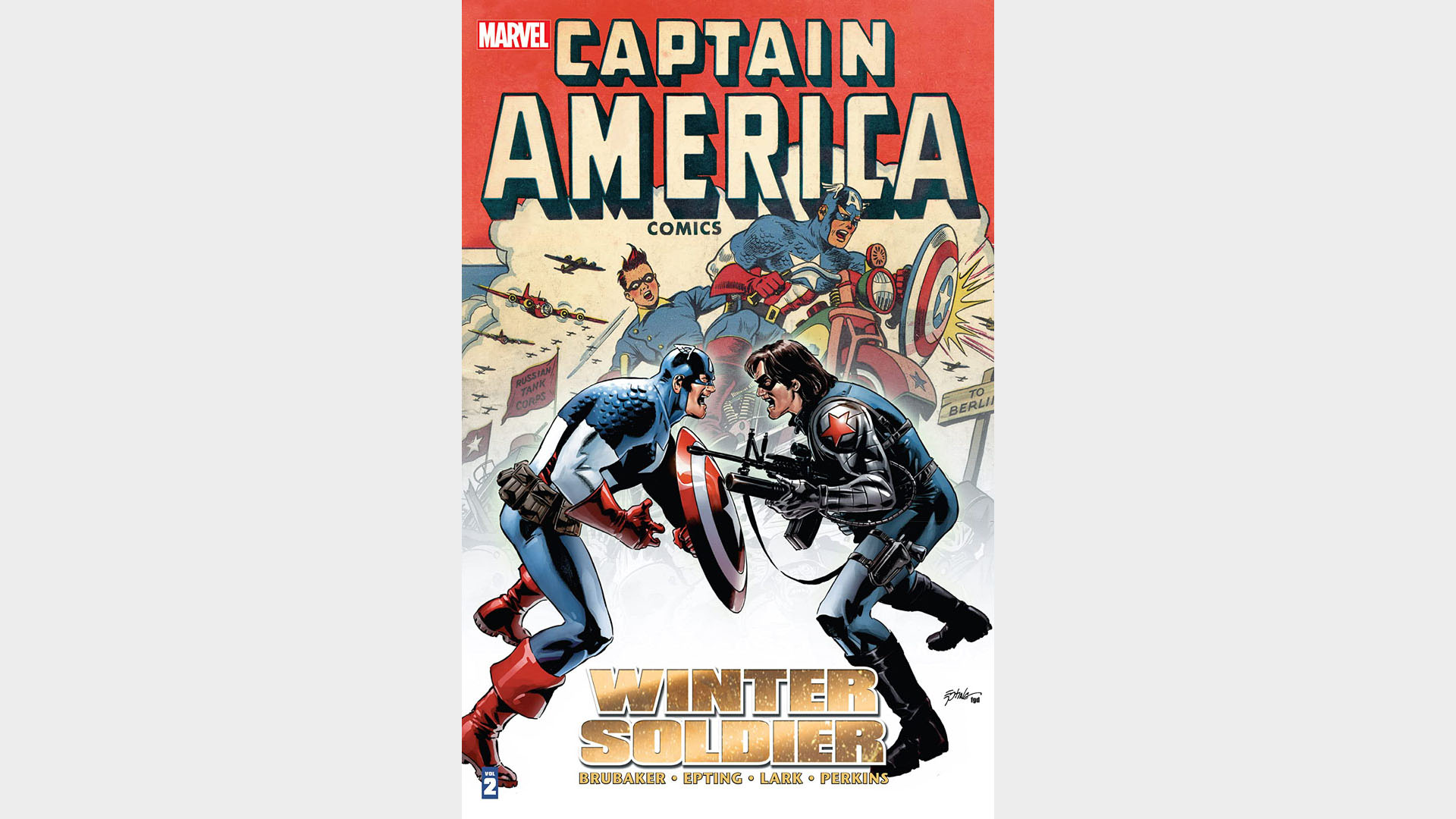
Bucky was a presence in Ed Brubaker's Captain America series from the outset; the first issue concludes with his successful assassination of the Red Skull. Yet those early issues see the writer relish in gradually teasing out exactly who this mysterious operative of the shadows is. Issues #8-#14 of the run (collected as Captain America: The Winter Soldier Volume 2) – sans a House of M tie-in – see Steve dealing with the ramifications of his old buddy being alive more directly.
It was a risky move. At the time of publication in late 2005, readers were still unsure about what resurrecting the character would really accomplish considering how much his death was one of the longest existing tragedies in comics, yet Brubaker and his artistic collaborators Steve Epting, Michael Lark, Mike Perkins, and Frank D'Armata are sure to firmly entrench Bucky in their contemporary story of paranoia and espionage.
In this early portion of Brubaker's run, the series has its moments of traditional superheroics. Much of the plot stems from the scheming Alexander Lukin's possession of the Cosmic Cube. It even finds time for a MODOK squad that needs to be dismantled. However, its biggest triumphs come from the creative team making full use of the shadows inherent in the spy games afoot, which allow the emotional and psychological responses of the characters to be centered. By the story's conclusion, Bucky is not only back but as well situated in the Marvel Universe as Steve was when he got unthawed way back in the '60s.
Buy: Amazon
2. The Winter Soldier
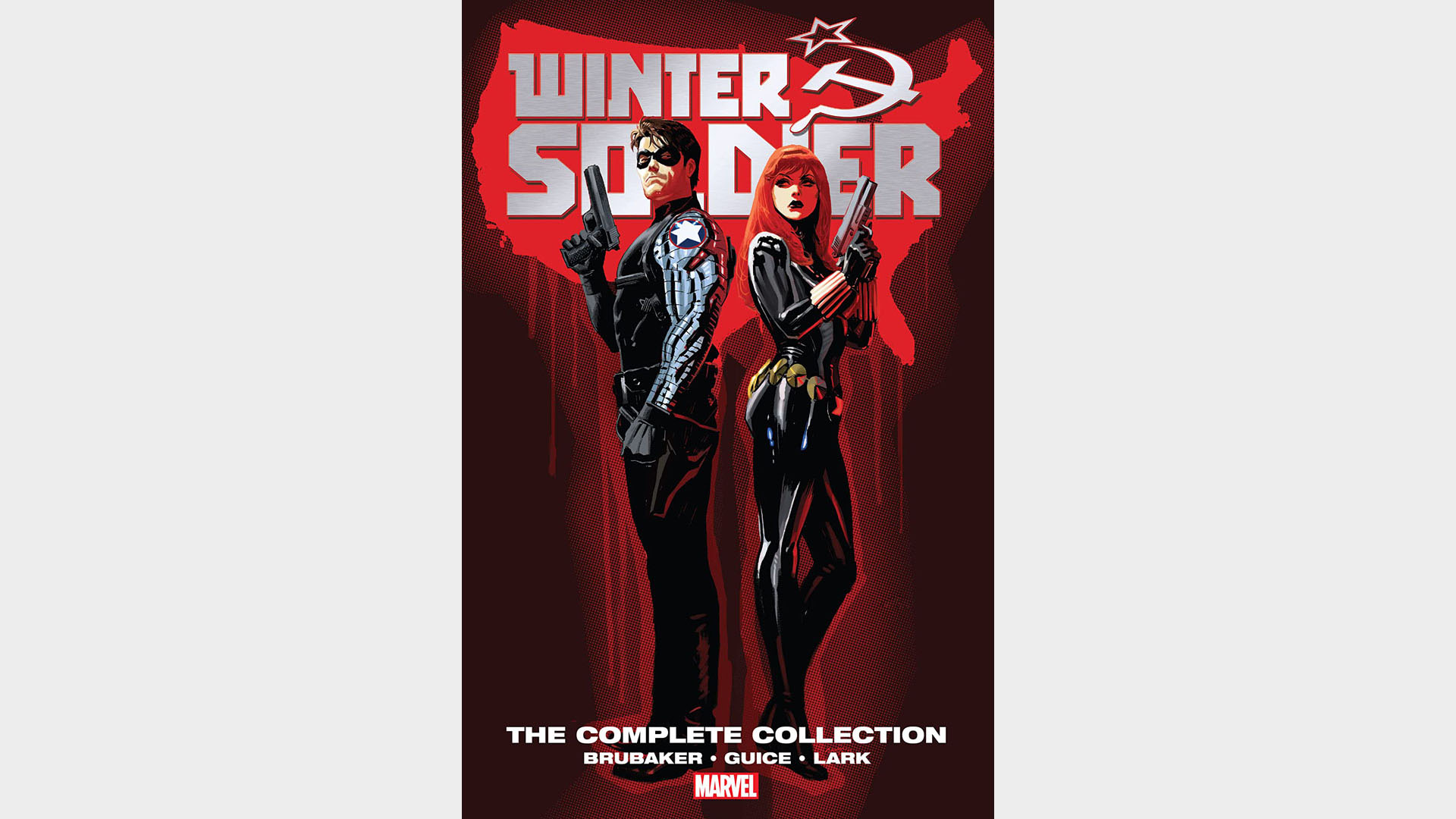
As most comics eventually do, Ed Brubaker's time on Captain America saw a return to the status quo when Steve reclaimed the mantle in Fear Itself. The event also allowed Bucky the opportunity to fake his death (with some help from Nick Fury) and return to the shadows once more as the Winter Soldier, a decision which ensured he was out of the public eye in the Marvel Universe.
But this was not the end of Brubaker's time with either character as he continued to write both, a Steve-led Captain America and Bucky's first titular series, Winter Soldier. The 14 issues were a return to the spy thriller milieu of the early Cap material that later issues had shifted away from. They were grounded without being entirely constrained by realism, as demonstrated by the gorilla with a machine gun that shows up in the first issue of this 2012 series. While Bucky's alias might be the title of the book, Black Widow is just much a co-lead and the primary thrust of the narrative, as it deals with their entwined past and the present predicaments that threaten their future.
Brubaker sees Bucky Barnes off with Butch Guice, Michael Lark, and Joe Caramagna in tow – not to mention a host of inkers and colorists, including some early work from one superstar-to-be Jordie Bellaire – and as you'd expect at this point, their work captures the mood well.
The globetrotting nature of the book ensures a mix of high-octane moments, ones that unfold under the cover of darkness and others of the fragile human connection between two people trying to heal and atone. Marking Brubaker's final contribution to Bucky's story, it is ultimately a heartbreaking end to his saga.
Buy: Amazon
1. The Death of Captain America

In a move that made headlines across America in 2007, Ed Brubaker opted to kill off Steve Rogers. Up until that point, his relationship with Sharon Carter had been a key throughline, just as his with Bucky's was, and both of these plus many more found themselves drastically shaken up as a result.
The void left in the wake of the Sentinel of Liberty's death is a move that left the entirety of the Marvel Universe reeling and was one that couldn't easily be filled in an instant. Instead, #25-#42 of the run (collected as The Death of Captain America) track Bucky's gradual acceptance of carrying on Steve's legacy through to picking up the shield – the transition completed with a new costume courtesy of Alex Ross – and how the world responds to a new Captain America. His artistic collaborators for this portion were the series staples of Steve Epting, Mike Perkins, Butch Guice, Frank D'Armata, and letterer Joe Caramagna. Even when the colors can verge on being too glossy, the pencilers themselves consistently provide sleek and kinetic artwork.
Despite the new leading figure, Brubaker keeps plates spinning with the other characters and plot threads like Sharon's manipulation by Doctor Faustus, Sin, Crossbones, Lukin, and the Red Skull too. These contribute to an ensemble nature for the series and the trajectories that these narratives take all feel like the natural ones to be taking even when killing off the figurehead of the book could've derailed them. It all leads to a point of Bucky stepping into the role of Captain America and by the time you get there, you just have to stop and take a moment to admire how well the saga at large has been built out from that initial decision to bring the character back.
Buy: Amazon
Matt Sibley is a comics critic with Best Shots at Newsarama, who has contributed to the site for many years. Since 2016 in fact.


